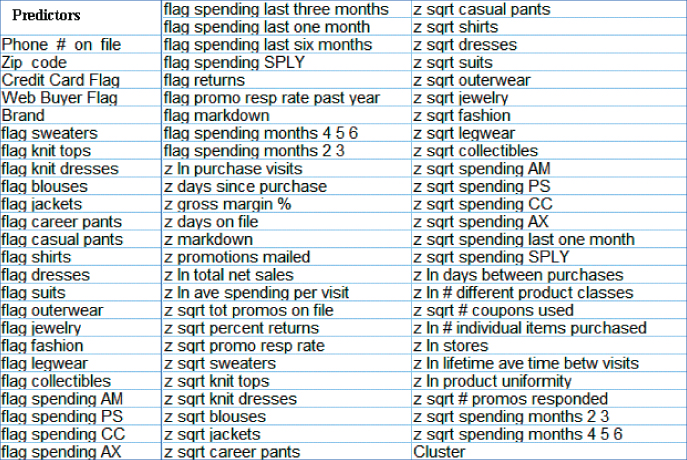Chapter 32Case Study, Part 4: Modeling and Evaluation for High Performance Only
In this chapter, we are trading model interpretability for performance. We will take advantage of the fact that multicollinearity does not affect the model predictions, and not worry about substituting principal components for correlated predictors. In this way, as the set of original predictors contain more information than the set of principal components, we hope to develop models that will outperform those of Chapter 31, even while sacrificing interpretability.
32.1 Variables to be Input to the Models
The models in this chapter will benefit from a greater number of input variables, including many of the continuous variables that were subsumed into the principal components in Chapter 31. The listing of the variables is provided in Figure 32.1. Note that cluster membership remains an input, even though the principal components do not.

Figure 32.1 Listing of inputs to the models in this chapter.
32.2 Models that use Misclassification Costs
We begin using the two algorithms where we can specify our misclassification costs: classification and regression trees (CART) and C5.0. A CART model was trained on the training data set, and evaluated on the test data set. The contingency/costs table for the CART model is shown in Table 32.1, where the misclassification costs were specified as $1 for false ...
Get Data Mining and Predictive Analytics, 2nd Edition now with the O’Reilly learning platform.
O’Reilly members experience books, live events, courses curated by job role, and more from O’Reilly and nearly 200 top publishers.

